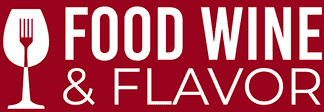
In today’s post I am continuing on with Bordeaux and covering two of the smaller, but still important wine regions: Entre-Deux-Mers and Sauternes. While both regions are part of Bordeaux, they are geographically and climatically different, leading to unique wines and localized classification systems.
Entre-Deux-Mers
Entre-Deux-Mers is a wine region located in the Bordeaux region of France. Translated to mean “between two seas,” this region is located between the Garonne and Dordogne rivers. The Entre-Deux-Mers region is the largest appellation in Bordeaux, covering approximately 40,000 hectares.
Climate
The climate in Entre-Deux-Mers is relatively moderate, with mild winters and warm summers. This climate is suitable for a wide range of grape varieties, making it a diverse wine region. The soil in the region is composed of limestone, sand, and clay, which contributes to the diversity of the wines produced.
Grape Varietals
The primary grape varieties grown in Entre-Deux-Mers are Sauvignon Blanc, Sémillon, and Muscadelle for white wines, and Merlot, Cabernet Sauvignon, Cabernet Franc, and Malbec for red wines. Sauvignon Blanc and Sémillon are the most widely planted grape varieties in the region, with Sémillon being the most important grape for the production of sweet wines.
Wine Styles
White wines from the Entre-Deux-Mers region tend to be crisp, with notes of citrus and tropical fruits. These wines are typically unoaked and are fermented in stainless steel tanks to preserve the fresh fruit flavors. Red wines from the region are typically medium-bodied with notes of red fruits and spices. The tannins in the red wines are generally soft and rounded, making them approachable in their youth.
Local Wine Classification System
The local wine classification system in Entre-Deux-Mers is based on the quality of the grapes and the winemaking techniques. The highest level of classification is “Graves Supérieures,” which is reserved for white wines made from hand-picked grapes that have been aged in oak barrels for at least six months. These wines are typically full-bodied with complex flavors and aromas of honey, vanilla, and toast.
The second level of classification is “Graves,” which is reserved for white wines made from hand-picked grapes that have not been aged in oak barrels. These wines are typically crisp and fresh, with notes of citrus and tropical fruits.
The third level of classification is “Entre-Deux-Mers,” which is used for both red and white wines. These wines are typically lighter in style, with bright fruit flavors and soft tannins.
Sub-regions
In addition to the local classification system, there are several sub-regions within the Entre-Deux-Mers appellation. These sub-regions include the areas around the towns of Cadillac, Loupiac, and Sainte-Croix-du-Mont, which are known for their sweet wines made from Sémillon grapes affected by noble rot.
The Entre-Deux-Mers wine region is a diverse and exciting area located in Bordeaux, France. With a moderate climate and a range of soil types, the region is capable of producing a wide range of grape varieties. The local wine classification system and sub-regions within the appellation contribute to the diversity of the wines produced. Whether you prefer crisp white wines or medium-bodied reds, the Entre-Deux-Mers region has something to offer for every wine lover.
Sauternes
Sauternes is known for producing some of the most famous and expensive sweet wines in the world. Sauternes is located in the southern part of the Bordeaux region, along the left bank of the Garonne river.
Climate
The climate in Sauternes is unique and plays a significant role in the production of the region’s sweet wines. The area is prone to morning fog, which creates a microclimate that is conducive to the development of Botrytis cinerea, also known as noble rot. This fungus attacks the grapes, causing them to shrivel and concentrate the sugars and flavors, resulting in the production of sweet wines.
Grape Varietals
The primary grape variety used in the production of Sauternes wines is Sémillon, with smaller amounts of Sauvignon Blanc and Muscadelle also used. Sémillon is the dominant grape variety due to its susceptibility to noble rot and its ability to maintain acidity levels while developing high sugar levels. Sauvignon Blanc is used for its acidity and Muscadelle for its aromatics.
Local Wine Classification System
The local wine classification system in Sauternes is based on the perceived quality of the wine, and it is different from the classification system used in other Bordeaux regions. The wines are classified into one of five levels, ranging from Premier Cru Supérieur to Deuxième Cru.
Chateau D’Yquem is world famous and was the only wine to be awarded Premier Cru Supérieur (“Superior First Growth”) in the Classification of 1855 for Sauternes. (see Bordeaux: Left Bank for full description of the Classification of 1855)
In addition to the local classification system, there are several sub-regions within the Sauternes appellation. These sub-regions include the areas around the towns of Barsac and Bommes, which are known for their sweet wines made from Sémillon grapes affected by noble rot.
Wine Styles
wines are typically golden in color, with aromas of honey, apricots, and tropical fruits. On the palate, they are rich and full-bodied, with a luscious sweetness balanced by a high acidity. These wines are often enjoyed as a dessert wine or paired with rich, creamy cheeses.
Sauternes is a unique and prestigious wine region known for producing some of the most famous sweet wines in the world. The microclimate in the region, which creates the ideal conditions for the development of noble rot, is essential to the production of these wines.
The use of Sémillon as the dominant grape variety, along with smaller amounts of Sauvignon Blanc and Muscadelle, adds complexity and balance to the wines. The local wine classification system and sub-regions within the appellation contribute to the diversity of the wines produced. If you are a fan of sweet wines, a bottle of Sauternes is a must.
Conclusion
We have covered two regions within Bordeaux – Entre-Deux-Mers and Sauternes. Both regions feature Semillon. Entre-Deux-Mers offers crisp white wines while Sauternes is the gold standard for Semillon affected by botrytis, or noble rot.
Both of these areas in Bordeaux offer wines worth trying and even cellaring (in the case of Sauternes).
Please leave a comment below if you’ve had a chance to try any of the wines from these two regions and tell us about your experience.







0 Comments